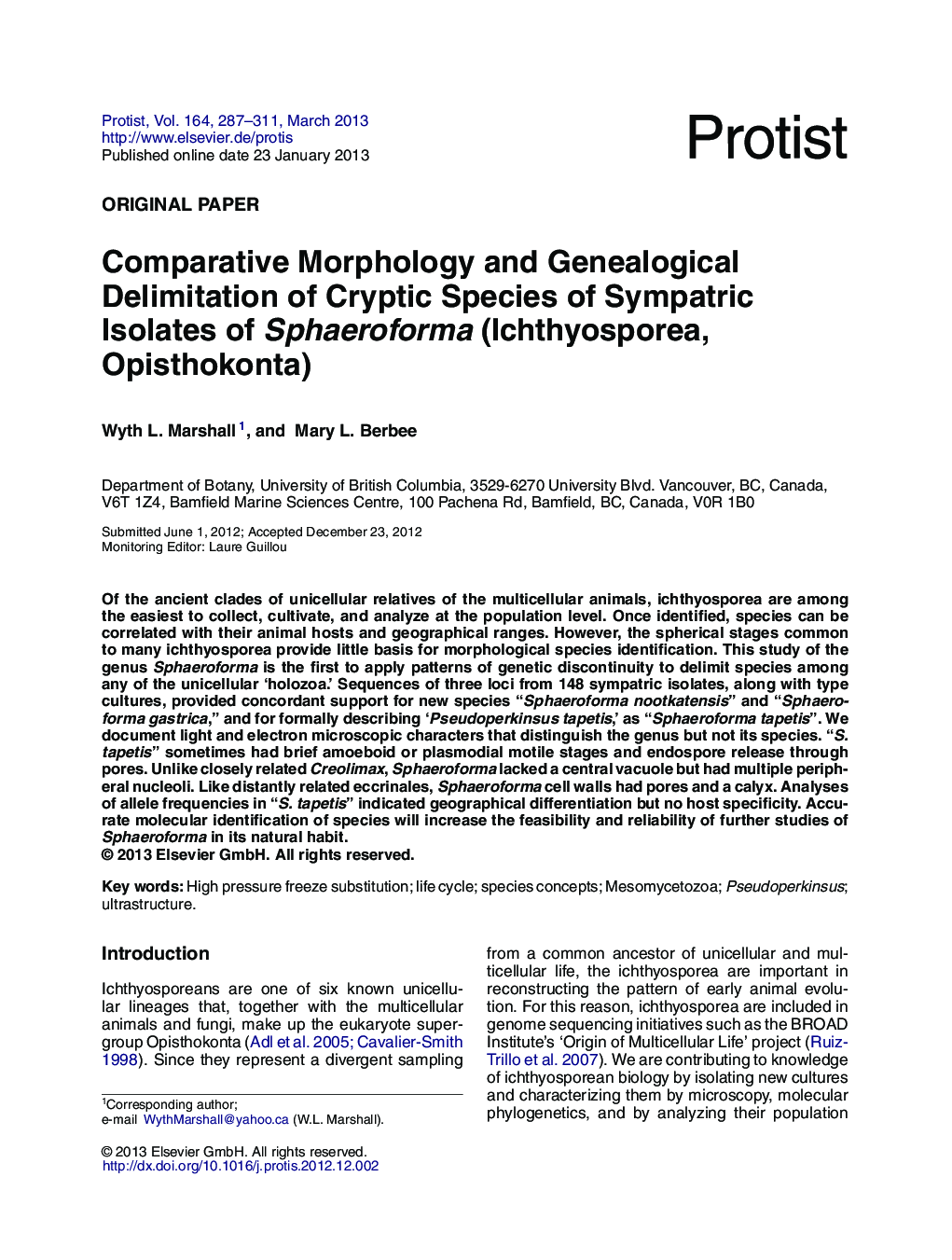| Article ID | Journal | Published Year | Pages | File Type |
|---|---|---|---|---|
| 2061765 | Protist | 2013 | 25 Pages |
Of the ancient clades of unicellular relatives of the multicellular animals, ichthyosporea are among the easiest to collect, cultivate, and analyze at the population level. Once identified, species can be correlated with their animal hosts and geographical ranges. However, the spherical stages common to many ichthyosporea provide little basis for morphological species identification. This study of the genus Sphaeroforma is the first to apply patterns of genetic discontinuity to delimit species among any of the unicellular ‘holozoa.’ Sequences of three loci from 148 sympatric isolates, along with type cultures, provided concordant support for new species “Sphaeroforma nootkatensis” and “Sphaeroforma gastrica,” and for formally describing ‘Pseudoperkinsus tapetis,’ as “Sphaeroforma tapetis”. We document light and electron microscopic characters that distinguish the genus but not its species. “S. tapetis” sometimes had brief amoeboid or plasmodial motile stages and endospore release through pores. Unlike closely related Creolimax, Sphaeroforma lacked a central vacuole but had multiple peripheral nucleoli. Like distantly related eccrinales, Sphaeroforma cell walls had pores and a calyx. Analyses of allele frequencies in “S. tapetis” indicated geographical differentiation but no host specificity. Accurate molecular identification of species will increase the feasibility and reliability of further studies of Sphaeroforma in its natural habit.
